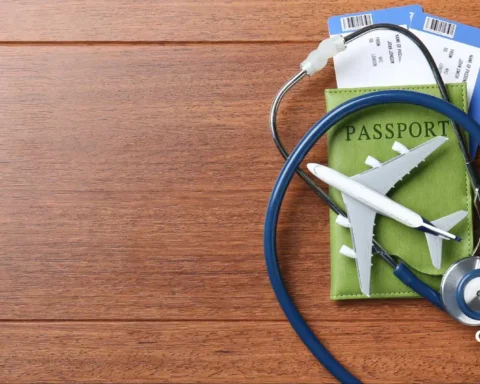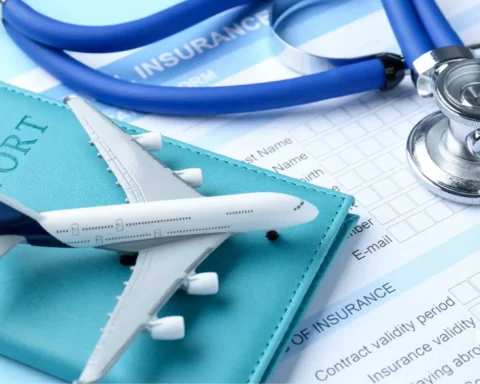Business letters are a fundamental part of formal communication in the corporate world. The functions of business letters are many and diverse. They serve to facilitate, enhance, and sustain business operations smoothly. Additionally, business letters provide valuable records for future reference while maintaining a professional tone and being logged as a formal document. In addition to the many functions of formal letters, there are also many types of business letters, all descriptive of their purpose in the workspace and maintaining the etiquette of business relationships.
Table of Contents
Keys Components of a Business Letter
The formal nature of a business letter demands that they follow a specific structure. Although the structure of business letters can vary depending on the function and type of letter, there is a consistency in the professional tone and other aspects of these types of letters. The following are the key components to be taken into account while writing a well-written business letter:
The Heading
The heading consists of the return address, with the date placed on the last line. Occasionally, it’s important to add a line before the date to include a phone number or email address. Typically, a blank line is left between the address and the date. If you’re using stationery that already features a pre-printed return address, you don’t need to type it out again, but including the date is essential. Ensure that the heading aligns with the left margin.
Recipient’s Address
The recipient’s address is where your letter will be directed. Ensure this address is thorough to guarantee its timely delivery. Always include job titles or honorifics if you have that information. Job titles are essential to make a distinction on the recipient’s part. Like the heading, this address should align to the left margin. Remember to leave a blank line after the heading and before the recipient’s address and another blank line after the inside address prior to the greeting. For a visual reference, check the sample letter provided at the end of this document.

The Salutation
The salutation (or greeting) in a formal business letter is always formal. It often begins with “Dear {Person’s name}.” Once again, be sure to include the person’s title if you know it (such as Ms., Mrs., Mr., or Dr). If you’re unsure about the person’s title or gender, just use their first name. For example, you would use only the person’s first name if the person you are writing to is “Jordan” and you do not know whether they identify as male, female, or non-binary.
The Body
The body is the meat of your letter; it carries all the important context that needs to be communicated. Single space and left align each paragraph for block and modified block letter formats. However, be sure to leave a blank line between each paragraph, no matter the format. Be sure to also skip a line between the salutation and the body, as well as the body and the close.
The Complimentary Close
The complimentary close is a short and polite remark that ends your letter. The close begins at the same justification as your date and one line after the last body paragraph. Capitalize the first word of your closing (Thank you) and leave four lines for a signature between the close and the sender’s name. A comma should follow the closing.
The Signature Line
Skip at least four lines after the close for your signature, then type out the name to be signed. If you are printing this letter out and sending it by mail, you will sign your name in pen. This line will include your first and last name and often includes a middle initial, although it is not required. You may put your title beforehand to show how you wish to be addressed. The signature should be in blue or black ink.
Enclosures
If you have any enclosed documents, such as a resume, you can indicate this by typing “Enclosures” one line below the listing. You also may include the name of each document.
Types of Business Letter
There are several types of business letters. Each of these types serves a different purpose but is crucial in maintaining professional relationships. The following are common types of letters:
Sales Letters
Typical sales letters begin with compelling statements that grab the reader’s attention. The main objective is to prompt the reader or potential customer to buy into the product being sold.
Order Letters
Order letters are written by consumers or businesses to request goods or services from a manufacturer, retailer, or wholesaler. They must include specific details such as the model number, product name, desired quantity, and expected price. Occasionally, payment may also accompany the letter. These are essential for all business transactions.
Complaint Letters
The language and tone you choose for a complaint letter can significantly influence the outcome of your grievance. It’s important to be direct yet tactful, maintaining a professional tone to ensure the company takes your complaint seriously.
Adjustment Letters
An adjustment letter is typically sent in response to a claim or complaint. Start with that positive news if the resolution is favourable for the customer. If not, maintain a factual tone while acknowledging the customer’s concerns.

Inquiry Letters
Inquiry letters seek specific information or clarification from the recipient. When writing this type of letter, strive for clarity and brevity, clearly stating the information you require. Be sure to include your contact information to facilitate an easy response.
Follow-Up Letters
Follow-up letters are generally sent after an initial communication. This might involve a sales department expressing gratitude for an order, a business person reflecting on a meeting’s outcome, or a job seeker checking on the status of an application. Often, these letters merge the elements of a thank-you note and a sales letter.
Apology Letters
Apology letters address grievances, acknowledge faults, and express regret towards clients or colleagues where miscommunications or errors have occurred. They are crucial in maintaining professionalism, a positive image, and integrity, as well as helping to repair and preserve important business relationships.
Letters of Resignation
Resignation letters formally announce the sender’s intention to leave their current employment. These letters should be straightforward and respectful and include essential details like the effective resignation date and a brief reason for the departure, if appropriate.
Cover Letters
Cover letters usually accompany a package, report or other merchandise. They are used to describe what is enclosed, why it is being sent, and what the recipient should do with it if any action needs to be taken. These types of letters are generally very short and succinct.
Recommendation Letter
A recommendation letter is written by an individual to endorse someone for a job, scholarship, or other opportunity. A recommendation letter plays a key role in helping the recipient gain credibility and opportunities.
Functions of Business Letter
Business letters serve many functions within a professional setting. Though there are many purposes of business letters, it is communication.
Letters and well-written letters are part of the oldest forms of communication between individuals and organizations. For effective business communication, letters are a mainstay. They help maintain a professional image while creating proper relationships in corporate circles. They also maintain documentary evidence as they are records of communication and will contain relevant details as they pertain to whatever context they are required.
In addition to serving as valuable evidence and reference material, they help maintain goodwill amongst participants. This can be between colleagues in a company through internal communication or with external associates such as customers.
Conclusion
The business letter is a staple of any professional setting. Understanding the importance and functions of a business letter is essential in not only being able to work and operate with others in a corporate setting but also in being able to utilize and enhance these functions. With communication being one of the most, if not the most, important aspects of business and corporate operations, being able to use the most important and common mode of communication in such an environment is an invaluable asset for any working professional.

FAQs
What are the types of business letters?
Common types of business letters include cover letters, offer letters, recommendation letters, sales letters, apology letters, thank-you letters, resignation letters, complaint letters, and memos.
How do I format a business letter?
A business letter should include several key components, starting with a sender’s address, date, recipient’s address, salutation, body, complimentary close, signature, and enclosure.
What is the purpose of a business letter?
Business letters enable communication between companies, clients, colleagues and other business entities for various purposes, such as making requests, providing information, or conducting transactions.









